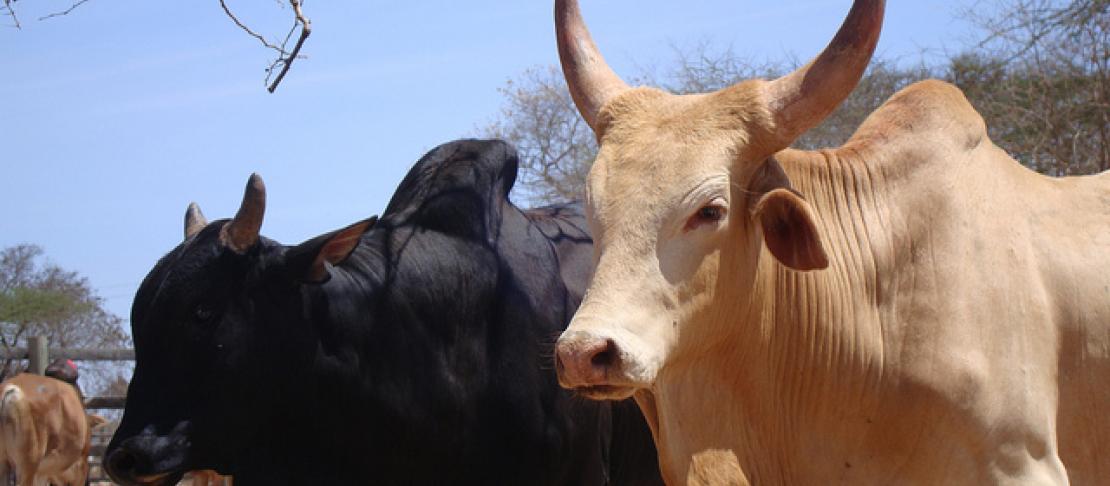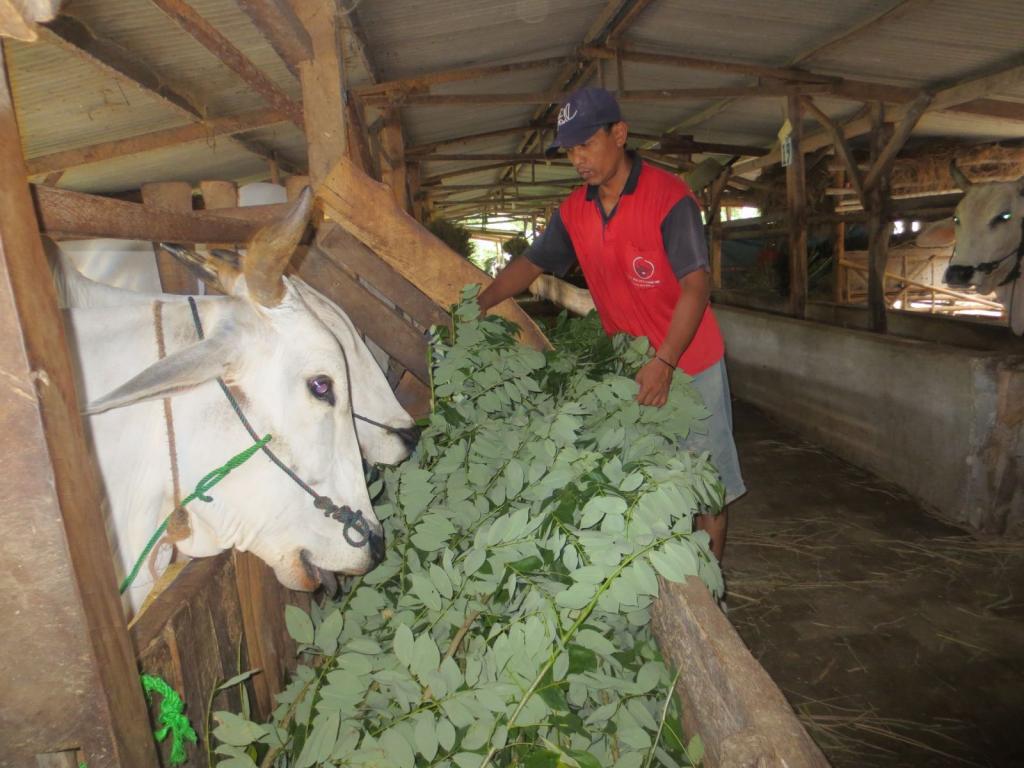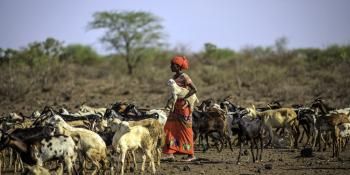Focus on reducing emissions intensity of livestock

How can livestock be part of a climate-smart future while enabling future food security for farmers and consumers around the globe?
The CGIAR Research Program on Climate Change, Agriculture and Food Security (CCAFS) is partnering with leading agricultural research and development organizations in global efforts to decrease livestock emissions, source of 30% of anthropogenic methane and 40% of nitrous oxide emissions globally.
Successes identified
Reducing the emissions intensity of livestock production systems and increasing the quantity of carbon stored in the soils supporting those systems is a core focus for the Global Research Alliance on Agricultural Greenhouse Gases (GRA), a key CCAFS partner.
Recently, its Livestock Research Group launched a new case study series documenting countries’ successes in reducing livestock emissions intensity on farms, while also addressing concerns such as increasing productivity, improving resource use efficiency and reducing other externalities associated with livestock production.
The case studies showcase the diversity of approaches being employed across different livestock systems and scales (national, state and local) in Chile, Indonesia, Ireland, the Netherlands, New Zealand, and the United States. And more are on the way.

Six case studies published by the GRA and partners describe successful efforts to reduce emissions from livestock in six countries. The case studies cover multiple practices, include changes in feed as pictured in this photo from Indonesia. Photo: GRA
The case studies explain what actions were taken and identify critical success factors; effects on productivity, income and food security; implications for adaptation; and any challenges to further adoption and up-scaling. They are a practical source of information for livestock farmers, extension agents, researchers and governments looking for new ways to produce more food, more sustainably.
For more information or to submit a new case study, please contact the Livestock Research Group.
CCAFS focus on reducing livestock emissions in Latin America
In Colombia and Costa Rica, CCAFS is partnering with the International Center for Tropical Agriculture (CIAT), the World Agroforestry Center (ICRAF), the Centro Agrónomico Tropical de Investigación y Enseñanza (CATIE), and national ministries of agriculture, environment, forestry, risk, development and planning, and universities to provide technical support and generate critical information and guidelines necessary to identifying climate-smart livestock options and attract financing for implementation.
Read more about the Livestock Plus project.
In Brazil, CCAFS is working on two different mechanisms to decrease the carbon footprint of the massive beef industry. CCAFS, the Institute of Agricultural Management and Forest Certification (IMAFLORA), the Rainforest Alliance, and the Universities of Michigan, Oxford and São Paolo, with support from the Global Innovation Initiative, are investigating how to harness private sector cattle certification to reduce the amount of deforestation and greenhouse gas emissions from cattle farming. Read about the certification project or the recent publication: 'Voluntary certification design choices influence producer participation, stakeholder acceptance, and environmental sustainability in commodity agriculture sectors in tropical forest landscapes'
In the “Green Municipality” of Paragominas, in Pará state in the Brazilian Amazon, the Center for International Forestry Research (CIFOR) provides knowledge to support public and private actors in the transition towards more sustainable beef cattle and agricultural production through enhanced landscape governance.
Read more about the TerraCert project.
CCAFS focus on reducing livestock emissions in East Africa
While emissions from livestock dominate the global agricultural emissions sector, this is especially true in East Africa. CCAFS is working with the International Livestock Research Institute (ILRI), ICRAF, Unique Forestry and Land Use, and Heifer International to integrate social and biophysical research - including surveys, ethnography, spatial and mechanistic modeling, and targeted GHG measurements - to identify landscape mitigation leverage points, enabling environments and national priorities.
Read more about the Mitigation in livestock and low emissions development pathways in East Africa project.
In Kenya specifically, research has shown that the sustainable intensification of dairy farming is associated with lower emissions per kilogram of milk (decreased emission intensity), increased incomes and improved nutritional outcomes for the rural poor. While there are challenges to quickly adapting the value chain, the Kenyan government has embraced improvement in the dairy sector and is working with CCAFS, ICRAF, and Unique Land Use and Forestry to develop a Nationally Appropriate Mitigation Action (NAMA) in Kenya's dairy sector.
Recent publications pertinent to East Africa livestock systems include:
- Working paper: Climate-smart livestock sector development: the state of play in NAMA development
- Journal article: Adapting to climate change in the mixed crop and livestock farming systems in sub-Saharan Africa
- Case study: Scaling up climate-smart dairy practices in Kenya through Nationally Appropriate Mitigation Actions
- Training guide: Sustainable Agriculture Land Management Practices for Climate Change Mitigation: A training guide for smallholder farmers
- Poster: Towards climate smart livestock systems in Tanzania: assessing opportunities to meet the triple win.
Related CCAFS initatives
CCAFS aims to include women and marginalized groups in livestock projects and attract financial support for climate-smart livestock initiatives. CCAFS is also examining consumer preferences and trends across regions. See a more complete list of our partners here.
Laura Kearney works for the New Zealand Agricultural Greenhouse Gas Research Centre in support of the Livestock Research Group of the Global Research Alliance on Agricultural Greenhouse Gases (GRA). The GRA brings countries together to find ways to grow more food without growing greenhouse gas emissions. It seeks to increase cooperation and investment in research activities to help reduce the emissions intensity of agricultural production systems and increase their potential for soil carbon sequestration, and improve their efficiency, productivity, resilience and adaptive capacity. It is structured around three key agricultural subsectors (paddy rice, croplands and livestock) and an integrative group dealing with issues cutting across those subsectors (such as soil carbon monitoring and sequestration, inventories, mixed systems, etc). The Alliance was established in 2009 and now has 46 member countries, plus formal partnerships with a number of global and regional organisations working on climate change and agriculture issues.
Julianna White is program manager for low emissions agriculture research at CCAFS.



